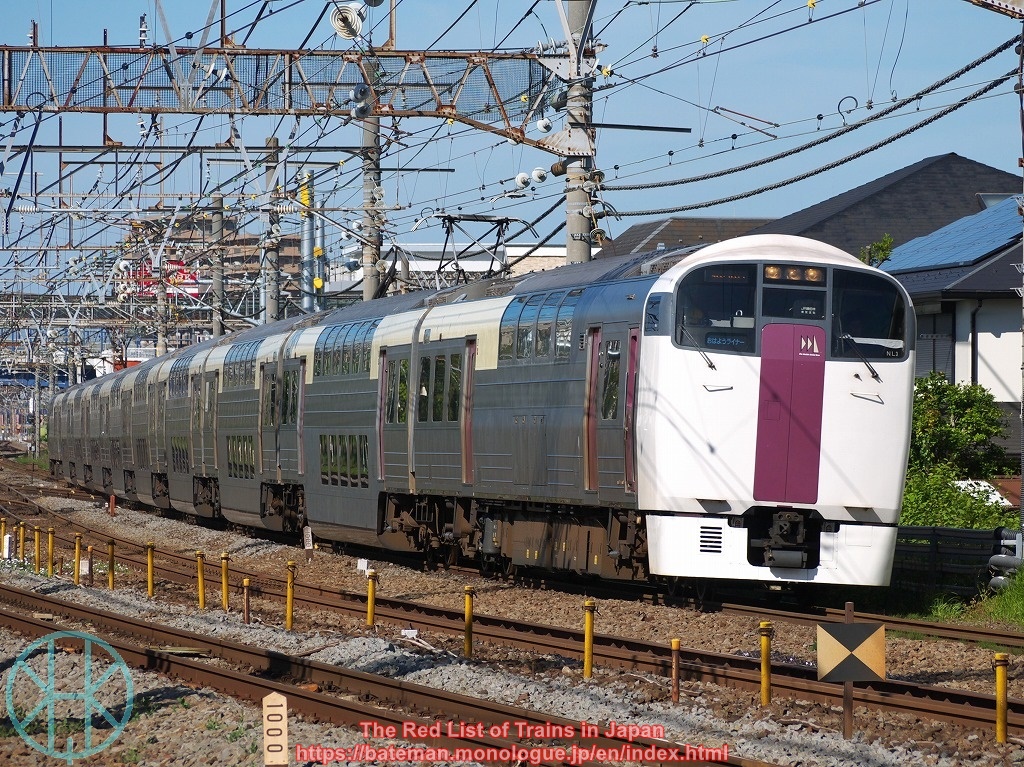JR East 215 series

Data (as of 14 Sep 2021)
| Status: | Extinct |
| Constructed in: | 1992-93 |
| Number built: | 40 |
| Retired in: | 2021 |
History
The 215 series was a type of all-double-decker suburban train with four ten-carriage units in total. JR East planned to offer more seating to ease congestion as Tokaido Main Line trains during peak hours were literally torture. The series was based on 211 series, but could not join to other trains. The maximum capacity of a 215 series unit was 1,010 people (including Green Cars), 43% more than a 211 series unit (10 coaches).
JR East initially considered the 215 series as an ultimate solution for rush-hour congestion, but it was unsuccessful. As there were only two sets of doors per carriage, and there were steps and narrow corridors that made passengers difficult to move, the 215 series had been a major source of delays. Moreover, it was far less comfortable than the predecessors (113 series and 211 series), as ventilation was not good, seating was small and the ceiling was low. Hence, JR East withdrew its plan of introducing more 215 series, including five-car units.
The 215 series trains had been impediments to smooth services so that JR East struggled to use them. They were initially introduced to Shonan Liner (Tokyo or Shinjuku - Odawara, weekdays only) and Rapid service Acty on Tokaido Main Line. Those for the latter services were withdrawn in 2001 and reallocated to Shonan-Shinjuku Line. However, they were replaced with E231 series in just three years, and the 215's only regular services had been Shonan Liner since then. The 215 series had another quasi-regular service at weekends and on holidays called Holiday Rapid View Yamanashi (Shinjuku - Kobuchizawa) on Chuo Main Line.
Since 2004, the 215 series trains mostly ran mainlines as empty coaching stock. Holiday Rapid View Yamanashi was discontinued in 2020, and Shonan Liner was replaced with Limited Express Shonan (E257 series) in 2021. Trade unions attempted to use them for seasonal services or rail tours, but the COVID-19 pandemic did not allow them to do so. All units were sent for scrap in the same year.
